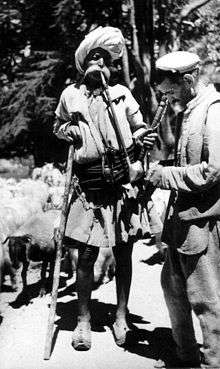Gaddi

Gaddi is a community not a cast that divide the people into several castes. It includes lower and higher castes. But they follow different culture which makes them different from other communities. They have their own rules and regulations.The Gaddis are a tribe living mainly in the Indian states of Himachal Pradesh and Jammu and Kashmir. The word tribe means group of people those follow traditional culture and are undeveloped. They are Hindus and belong to several castes including Brahmin, Rajput, Dhangar, Khatri, Rana and Thakur.
Frequently associated with the ancient Brahmpur kingdom at Chamba, although they played no major role in its governance, the origins of the Gaddi people are lost in time. There are at least four theories for their arrival in that place, often relying on the intertwining of oral history and myth, and in one case on the dubious ethnohistories of the British Raj era.The gaddi shepherd mainly spend their winter in the low hills of shiwalik range.When the snow melted and the high passes were clear they moved on to higher mountain meadows.Omacanda Hāṇḍā discusses the dubiety of these and concludes that "Nevertheless, it may be said with due certainty that the present-day Gaddis are the descendants of one of those casteless nomadic shepherds of the Indian plains who once lived around the Barmer area of Rajasthan" and infers this from the similarities of various costumes and accessories.[1]
References
- ↑ Hāṇḍā, Omacanda (2005). Gaddi Land in Chamba: Its History, Art & Culture : New Light on the Early Wooden Temples. Indus Publishing. pp. 28–32. ISBN 978-8-17387-174-0.
Further reading
- Verma, V. 1996. Gaddis of Dhauladhar: A Transhumant Tribe of the Himalayas. Indus Publishing Company, New Delhi.
External links
| Wikimedia Commons has media related to Gaddi. |